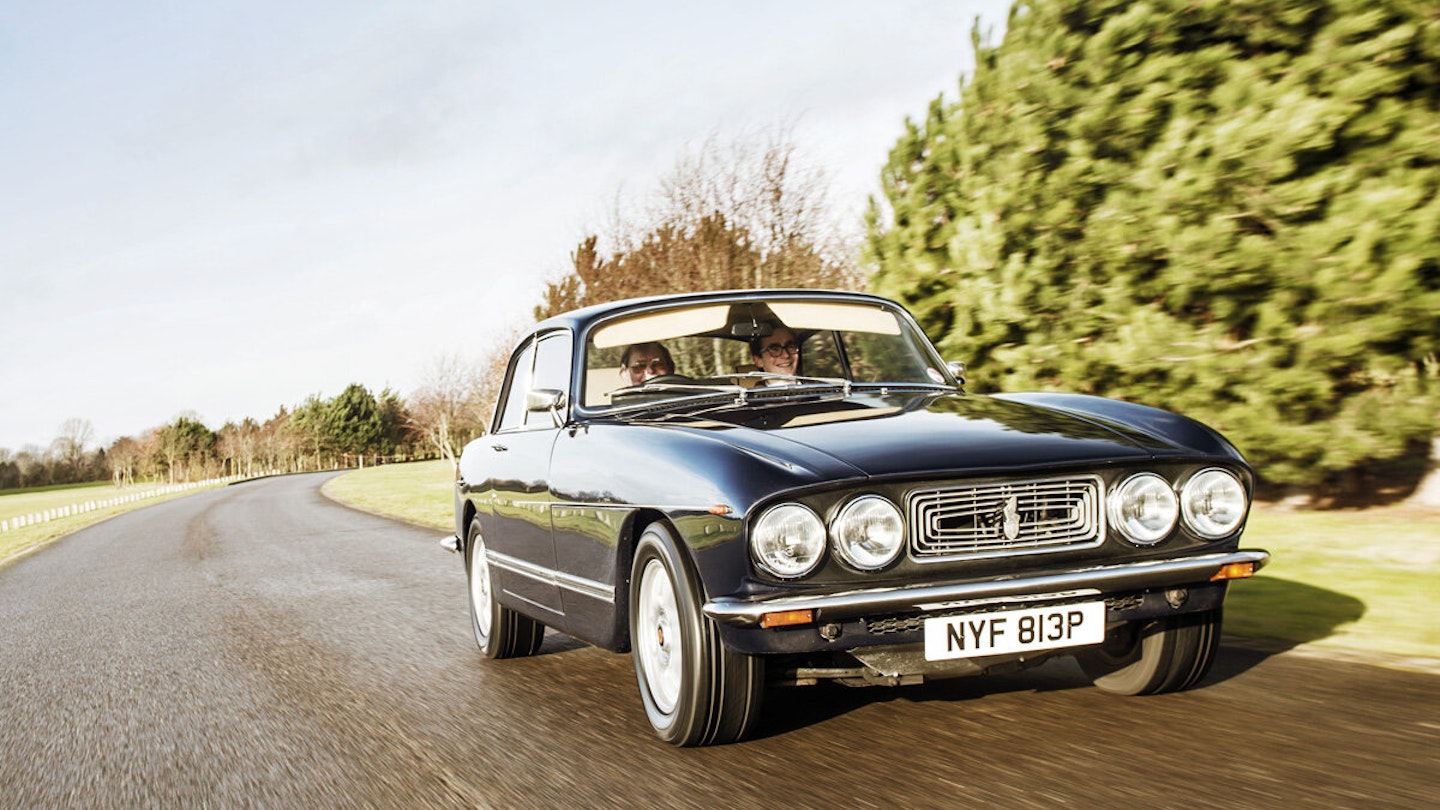Rarely does any discussion of Bristol cars get very far before the name of LJK Setright pops up. For decades Setright penned erudite articles for Classic Cars – and other, lesser, organs – which more often than not sang the praises of the cars from Filton. He wrote the definitive marque history, the vast two-volume A Private Car in 1998, in which he confessed he was ‘barmy about Bristols’. It was Setright’s unstinting praise over so many years that prompted reader Martin Roberts to put a Bristol on his dream drive list, and we’re about to make that dream come true.
Martin’s List
Martin teaches classics at Winchester House School in Brackley. His fleet includes a Rover 3500S, Toyota MR2 Mk1, Citroën 2CV, Chevrolet Corvette ZR1 and a Jaguar E-type Series 1 4.2. ‘I love driving classics because there’s such diversity,’ he says.
Messerschmitt KR200
Daimler Majestic Major
Mini Cooper S
Ferrari 308GT4
Amphicar
Bristol 410 or 411
Morris Minor MM
Citroën CX Turbo
Lamborghini Urraco
Austin 7
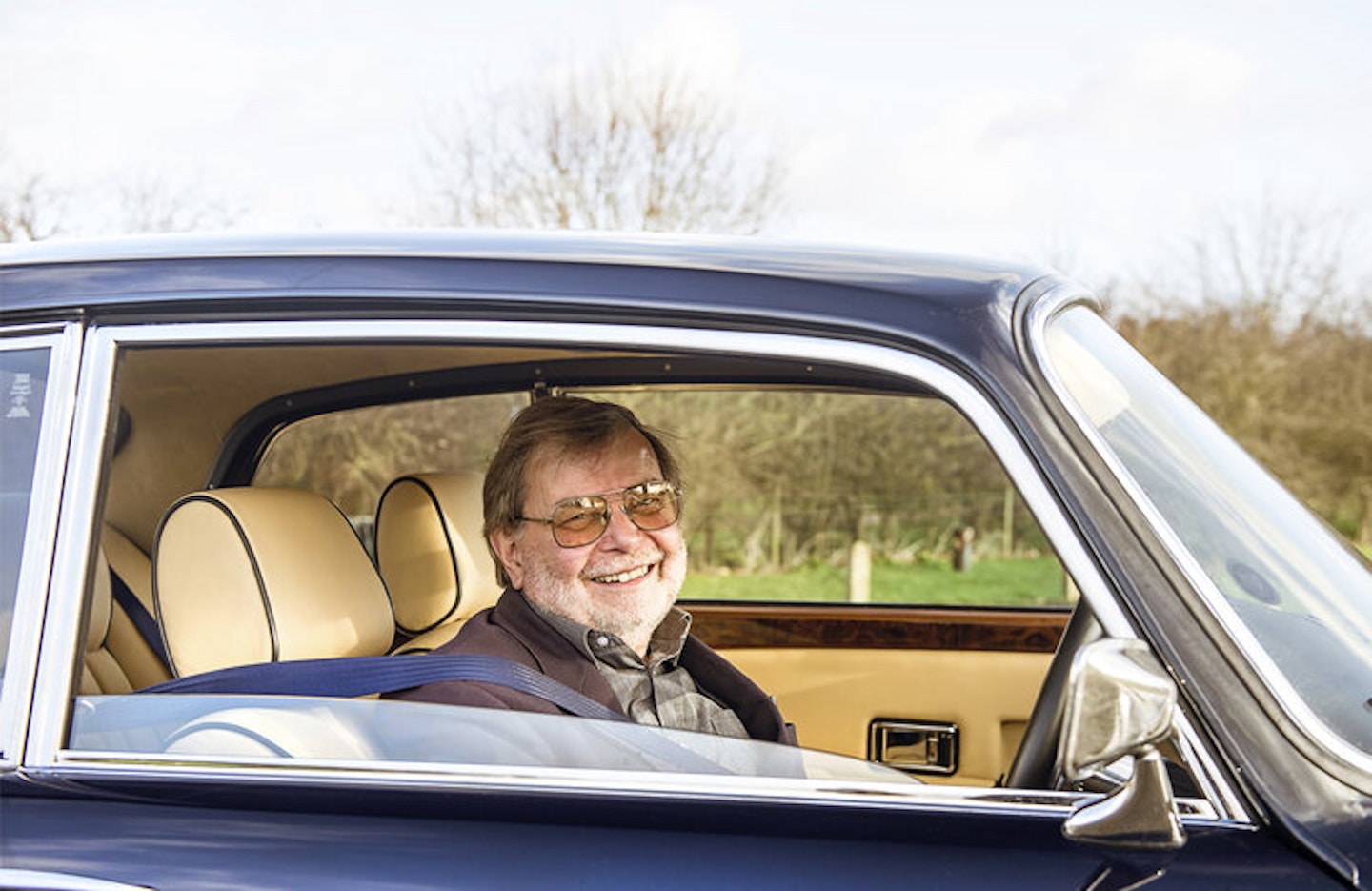
Sitting in the wood-and-leather-trimmed cabin of a 411 Series 5, Martin explains why this is the Bristol he most wants to drive. ‘I like the things that are most developed, when there’s all that constant engineering over a long time – and it’s not done down to a cost, it’s done to get it exactly right,’ he says. In some ways the 411 marks the apogee of the V8 Bristol line, gradually developed from the 407 in 1961, combining the effortless elegance of the early cars with a decade and more of development under the aluminium skin.
That perfectionist engineering work is still going on at Bristol, though no longer in Bristol. The new management team at Bristol Cars is as keen to maintain and enhance older models as it is to introduce new ones (a hybrid Bristol is due in 2016). There are plans to remanufacture parts for older cars and re-issue workshop manuals. Bristol bought this 411 last year to act as a development vehicle, and it now sports some discreet modifications, including a Seventies-style Becker radio that cleverly hides a satnav system, and a big brake kit engineered by the Bristol service department at Brentford. At the front the massive ventilated discs are clamped by AP Racing calipers, and to clear the new brakes there are 16-inch alloy wheels carrying modern Avon tyres. A four-speed automatic transmission, as used on later Bristols, is planned.

There are two schools of thought on how to start the Chrysler V8s, according to Bristol’s Philip White. ‘The guys in the service department say put your foot down and turn the key. Others say you just flick the key and it should fire immediately.’ Martin gives the V8 some throttle, but it takes a few churns of the starter before the big Chrysler V8 bursts into life. It settles to a tickover so quiet and even that it’s barely noticeable.
Earlier Bristols had Torqueflite automatic transmissions operated by push-buttons, but by the Seventies there was a floor-mounted lever. Martin clicks the selector into Drive and we waft gently into the Berkshire lanes. ‘The power steering is beautifully weighted. It doesn’t feel over-light, but it isn’t heavy at parking speeds at all,’ he says. Conscious of the Bristol’s long wheelbase, he’s taking care to leave plenty of space at the apex of tight turns. ‘It’s the length of it, not the width, you have to be careful with. I love narrow cars,’ he says, pointing out that there’s still plenty of shoulder room inside because the doors are so slim. ‘They’re not full of crash bars and loudspeaker housings and who knows what.’
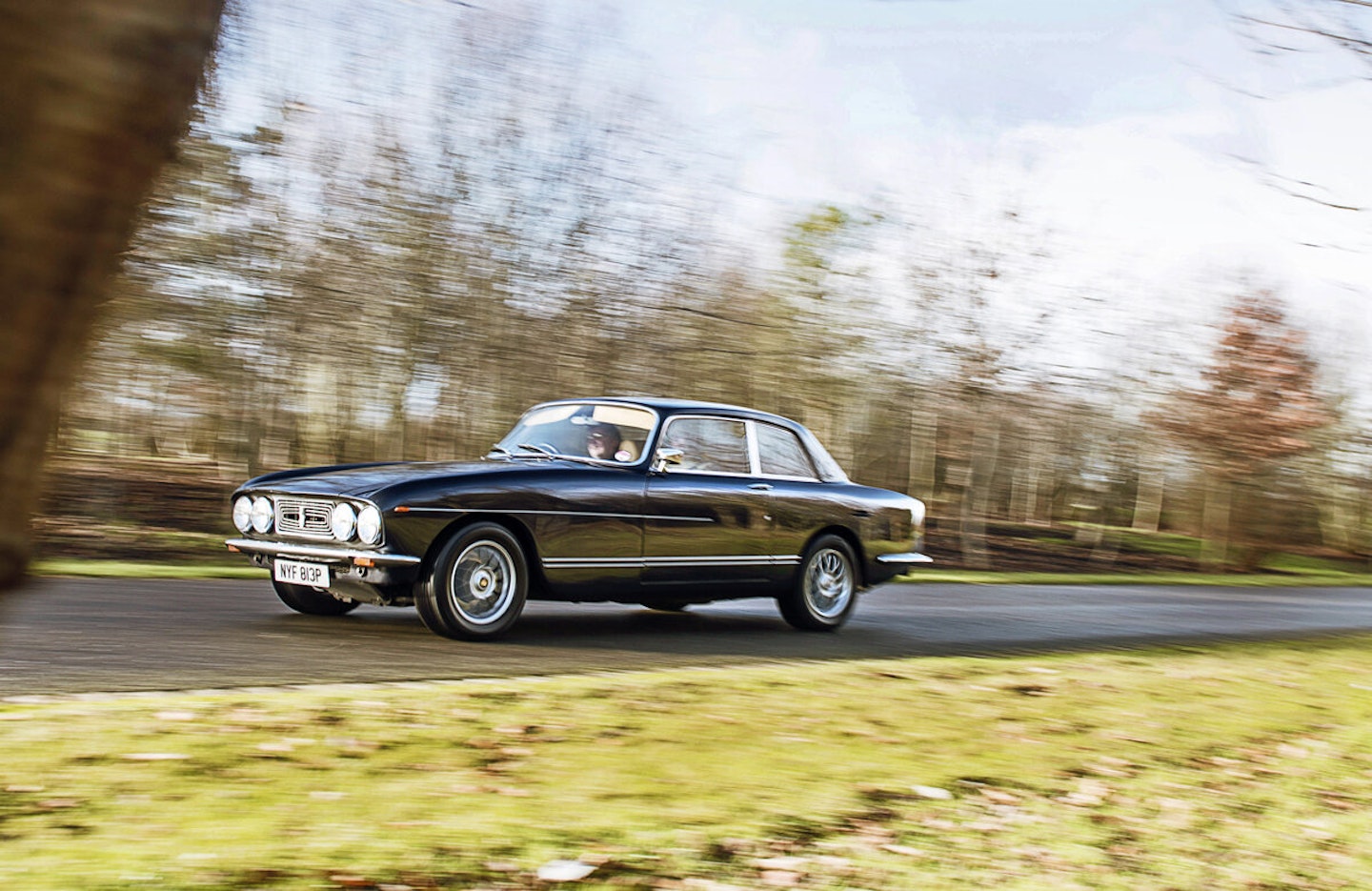
The Bristol’s engine note is always subdued, not that it would bother us if it was a little more vocal. ‘I just love the sound of V8s,’ says Martin, who owns Rover and Chevrolet examples himself. ‘They’re addictive. Put me next to a stock car or a power boat, I’m happy.’ With a prod of the accelerator he kicks the transmission down into second gear, and the 6.6-litre V8 burbles urgently ahead of us. ‘It doesn’t feel like a muscle car,’ he says. ‘It’s just so British – even with an American engine. It has that sort of quality.’
It also has enough presence to turn heads. Other drivers crane their necks for a better view, and as we thread the Bristol through the country roads around Maidenhead we pass a party of ramblers who smile and wave. Martin is revelling in the 411’s involving nature. ‘It makes you work a little bit – it doesn’t do everything for you. If you’re not having to put a bit of effort in, I think you’re missing out on a lot of the enjoyment. In a modern car you get that feeling that you can’t remember the last few miles you’ve driven. I don’t imagine you would ever have that problem in this, because it makes you think – it makes you drive. And yet it’s very relaxing. Look at this broken road,’ says Martin, indicating the pot-holed tarmac of the B-road we’re on. ‘You don’t notice it. It’s just very sophisticated. This is quality beyond anything I’ve experienced.
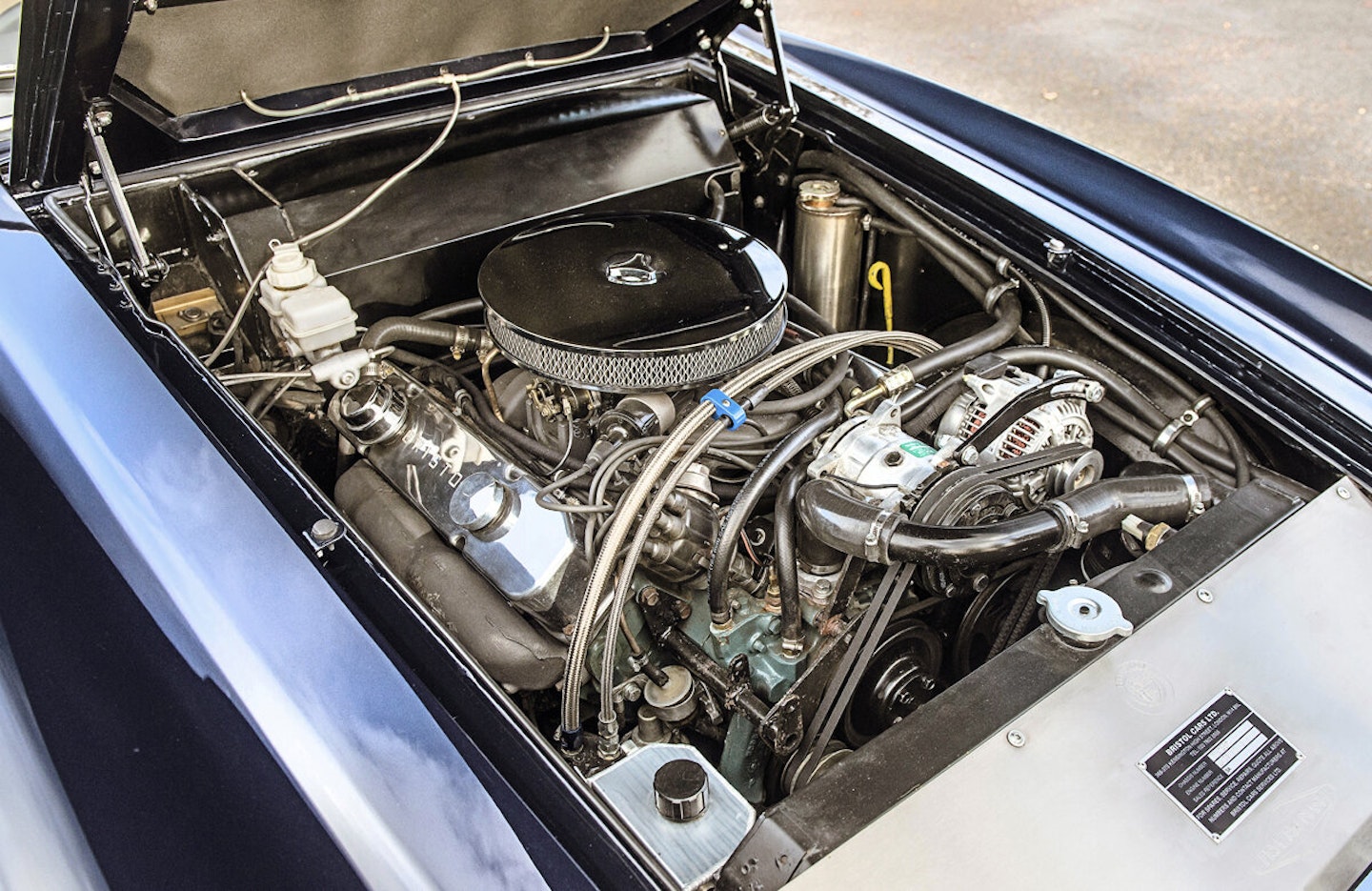
‘The thing I most like is the way it makes you feel a part of it – you’re not a person driving a car, you’re actually working in something that’s been designed to fit around you. It’s possible to get a comfortable driving position, the visibility is wonderful, the brakes are fantastic. I’m sure if I drove a modern car of a similar quality straight after it would be much more silent, far less wind noise – and with zero character,’ says Martin. ‘And people would think I were a retired night club owner.’
It’s my turn behind the Bristol’s Moto-Lita steering wheel. It’s easy to get comfortable in the big, manually-adjustable leather armchair, and the straightforward driving position is as good as it gets. Visibility in every direction is excellent thanks to the slim pillars, and from the driver’s seat the curved front wings frame the long bonnet stretching out ahead, making it easy to judge the 411’s width. Despite its length – at nearly 17 feet, the Bristol is a foot longer than a modern Bentley Continental – manoeuvring is easy thanks to light steering and excellent lock.
“It’s just so British – even with an American engine. It has that sort of qualityPull quote here”
On the road it’s the steering that is one of the Bristol’s most impressive features. The wheel never fights in your hands, even when the 411’s fat Avons bump over imperfections in the road surface or splash through the pools of standing water that collected when the heavens opened. Yet there’s constant subtle feedback through the rim, reporting what the front tyres are doing, and the big Bristol steers with a delicacy and precision that belies its size. Good balance and relatively light weight help: the 411 has less mass to shift than contemporary rivals like the Jensen Interceptor, Aston Martin V8 and Rolls-Royce Corniche. It will hustle down a twisty road with aplomb, the gearbox locked in second and the V8 using its mountain of mid-range torque to haul the 411 out of the corners. Any excess of tractive effort tends to spin the inside rear wheel rather than set the tail sliding.
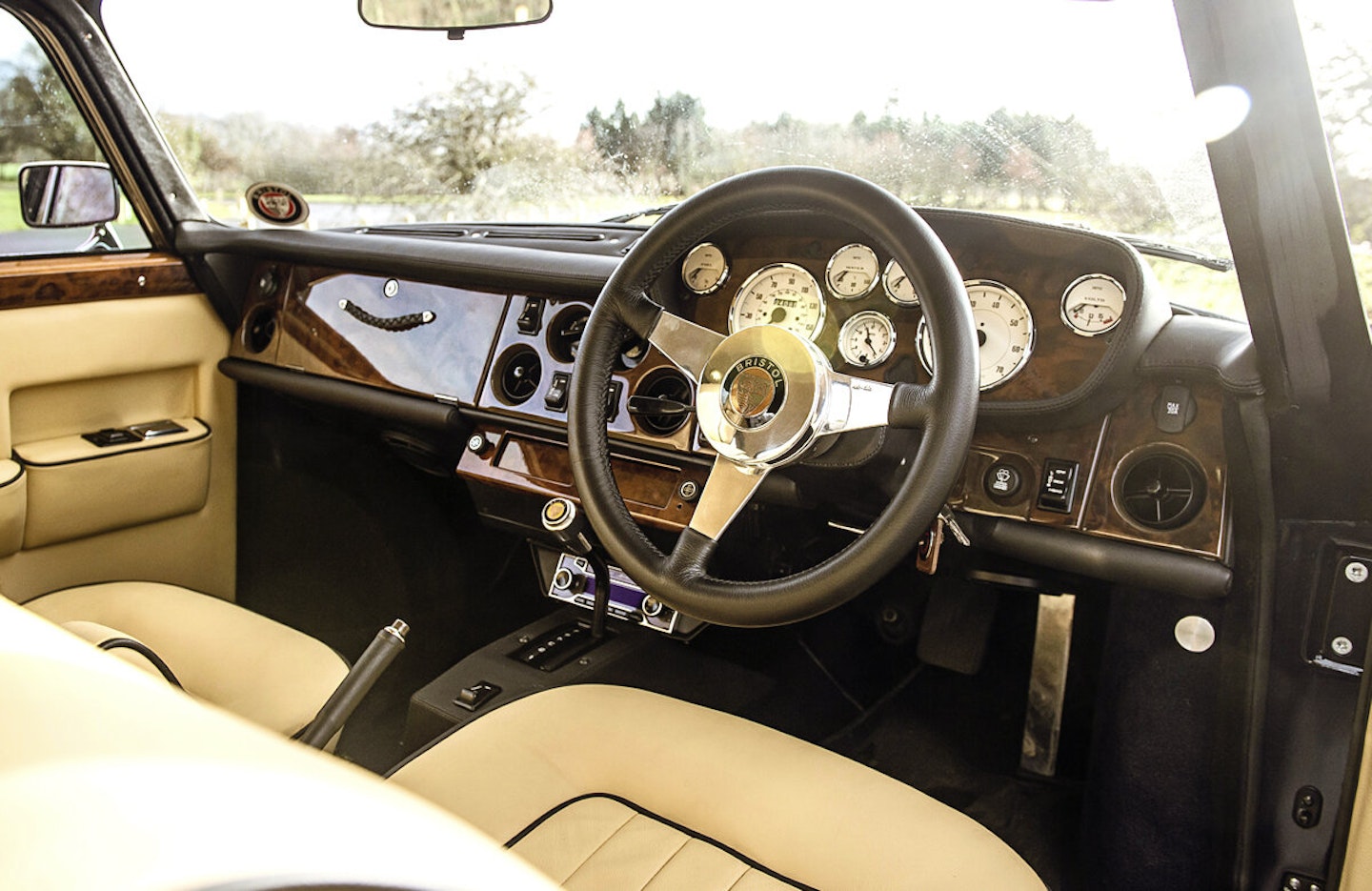
Performance, though, is brisk rather than bellicose. The stiffly sprung accelerator needs a hefty push, and then the Bristol doesn’t do anything so uncouth as ‘accelerate’ – it merely surges forward until it reaches cruising velocity, before oozing into the long-striding top gear. Its real forte is sweeping A-roads or along motorways, where it eats up miles in comfort.
‘Series 5s are good cruisers,’ agrees Philip White. ‘They’re very relaxing. Series 1s are more of a driver’s car. They’re slightly under-tyred at the back, and they have the 6.3-litre engine, which is actually a little more plucky than the 6.6. It’s a little more nimble, and you get slightly better miles per gallon.’ Fuel consumption is, by modern standards, epic: 12-14mpg is about the best you can expect day to day. ‘They’re good for motorway mileage,’ says Philip. ‘You’d get 18mpg.’
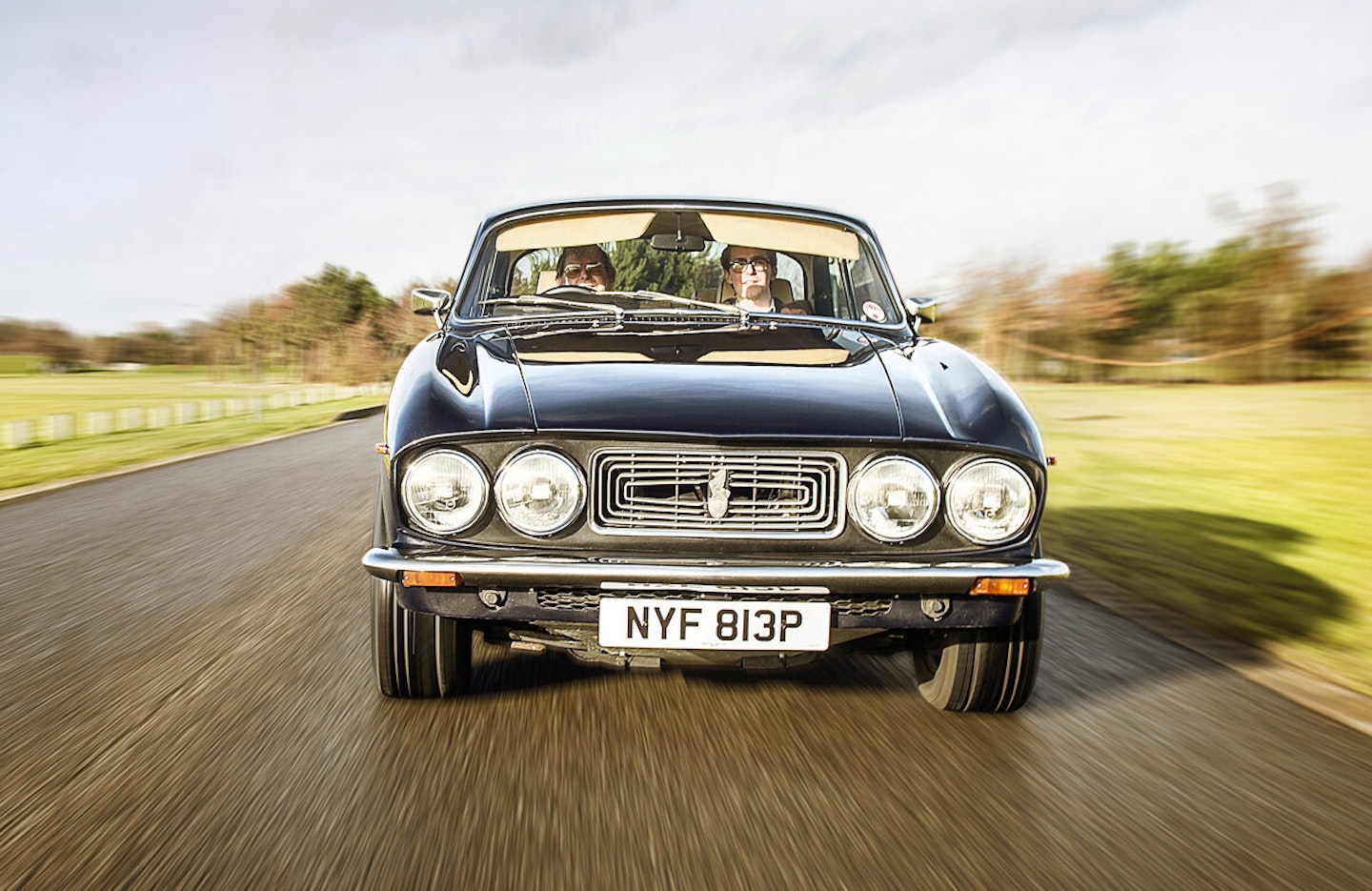
Martin agrees that the fuel consumption would one of the downsides of Bristol 411 ownership, but can see plenty of compensations. ‘It’s the sort of car you might find yourself rationalising your collection for,’ he says, and you get the impression he might be thinking of doing just that. ‘Not only is it enormously high performance, but it’s also the sort of you car that you could gently cruise around in when you’re not in a screaming hurry. And it doesn’t provoke a nasty reaction,’ Martin enthuses. ‘It shrinks around you and it feels part of you. It is difficult to see how anything else could combine such good taste, luxury, engineering and sheer roadability. I think it’s wonderful. It’s the complete car.’
1975 Bristol 411 Series 5 specifications
Engine Chrysler 6566cc OHV V8, Carter 4-choke carburettor Power 264bhp @ 4800rpm Torque 335lb ft @ 3600rpm Transmission Three-speed Chrysler Torqueflite automatic, rear-wheel drive, limited slip differential Brakes Discs front and rear, servo assistance Steering Recirculating ball with power assistance Suspension Front: double wishbones, coil springs, anti-roll bar, telescopic Koni dampers. Rear: live axle, Watt linkage, longitudinal torsion bars with self-levelling telescopic Koni dampers. Weight 3775lb (1712kg) Performance Top speed 130mph; 0-60mph 10sec Fuel consumption 13-18mpg Cost new £12,587 Value now £100,000
Want a drive?
Classic Cars will make a dream drive happen for one reader in every issue. All you need to do to be in the reckoning is to send us your list of the ten cars you dream most of driving, plus a CV of the classic cars you’ve owned, then fire it off to classic.cars@bauermedia.co.uk. You’ll need to be prepared for the possibility of long-distance travel and an early morning start, but the experience will be unforgettable.
